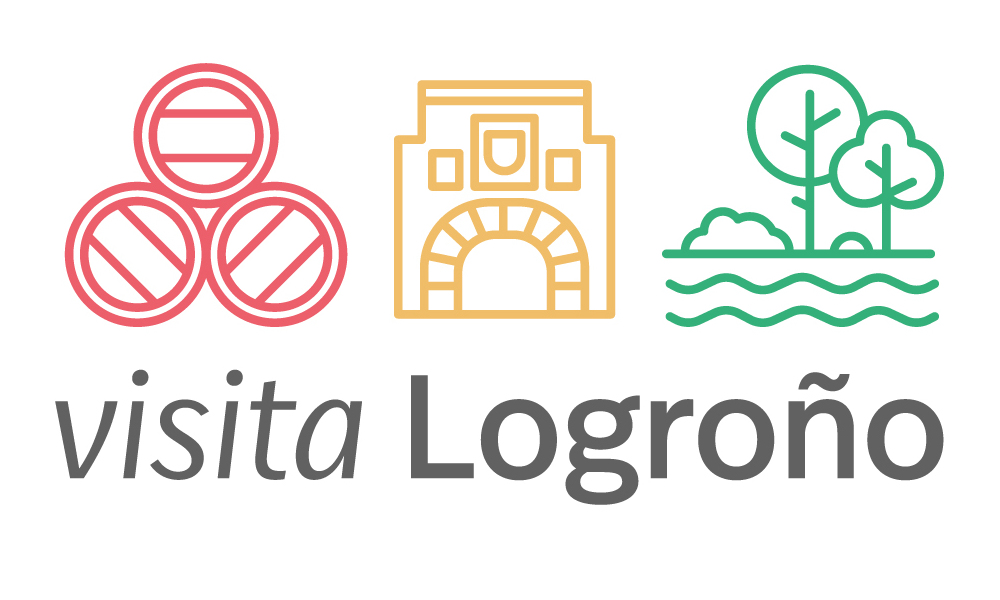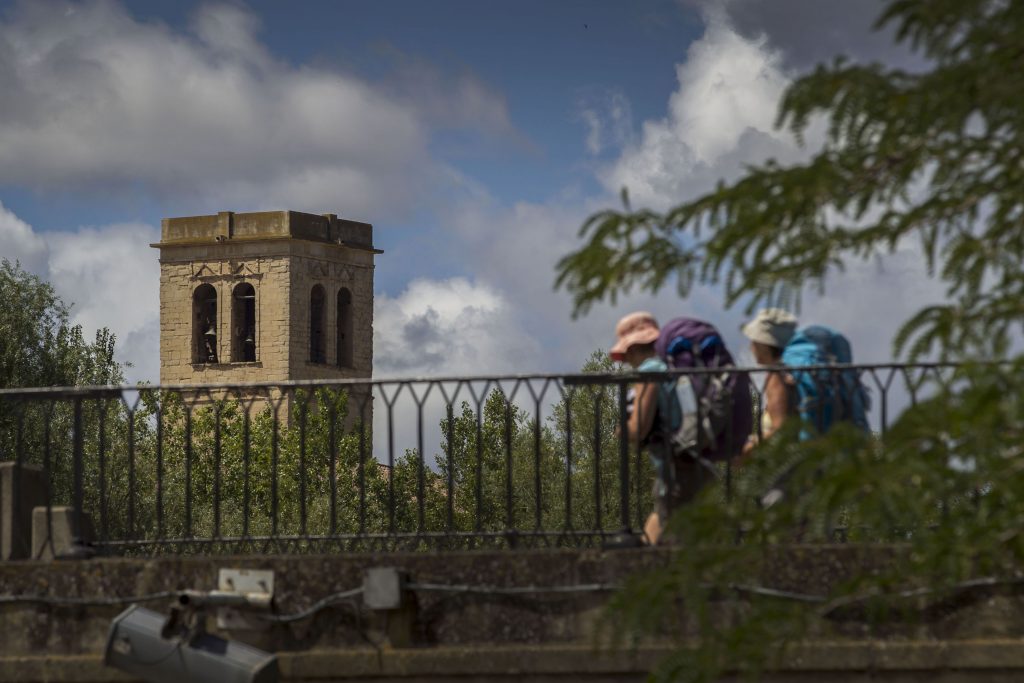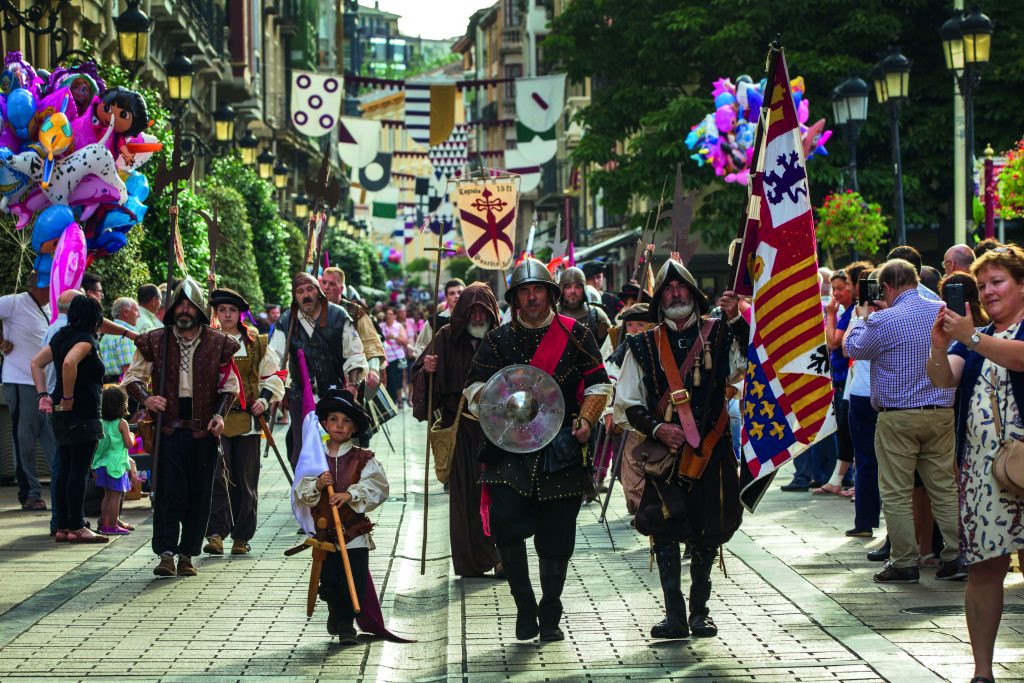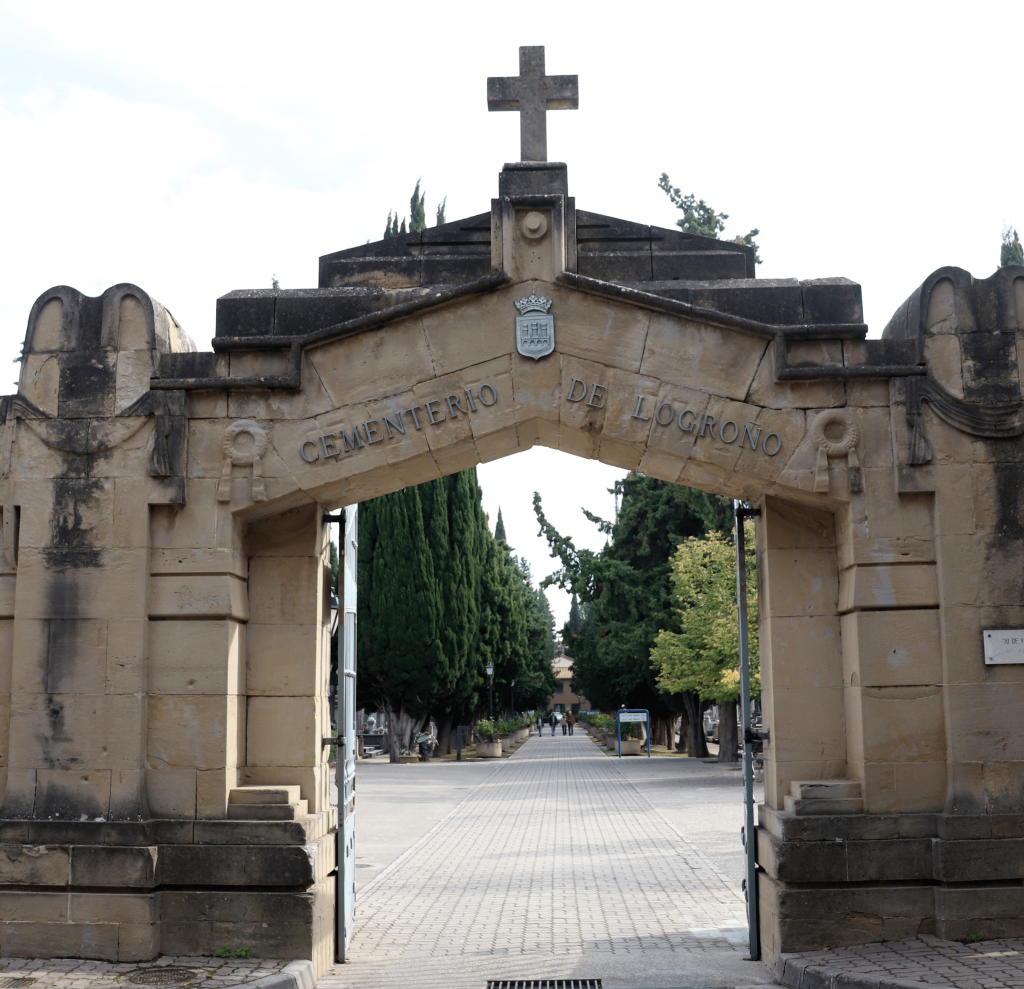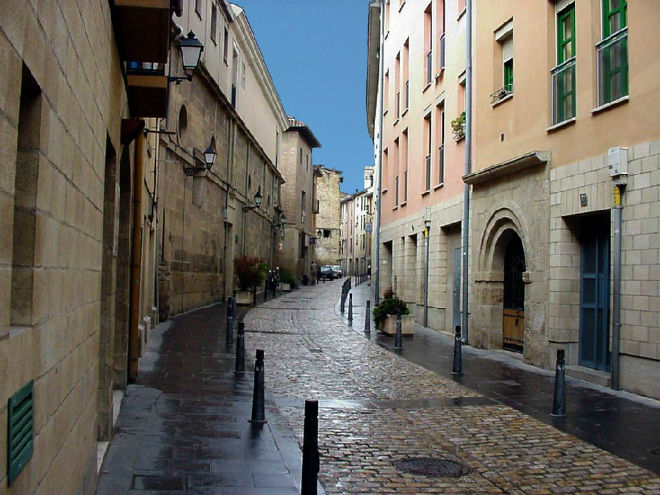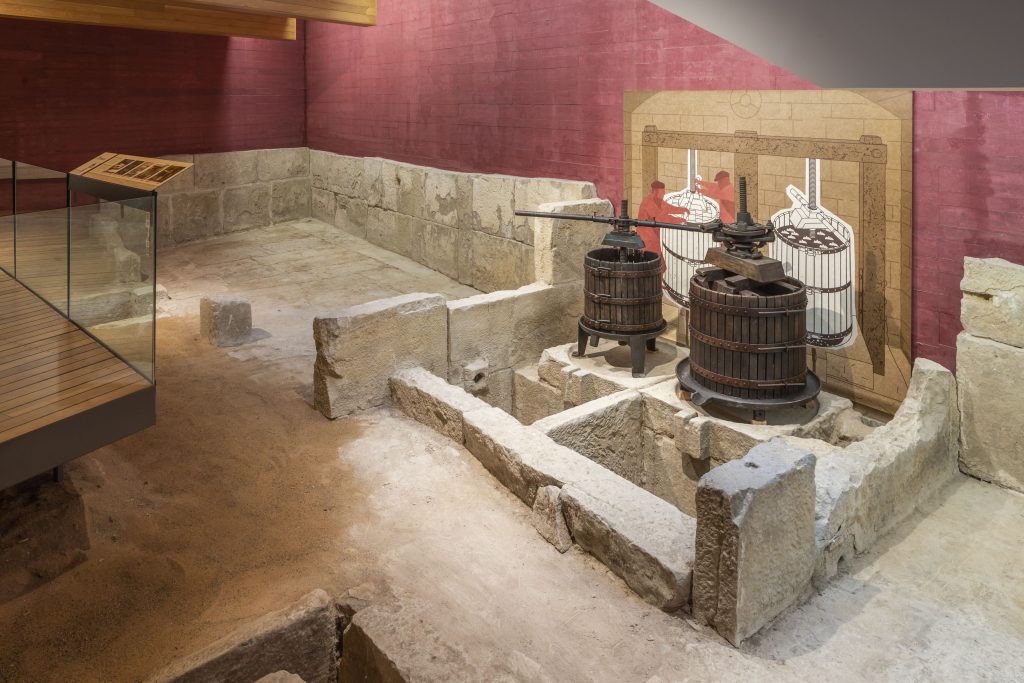“Con pan y vino se anda el camino” (With bread and wine you can walk the road), according to a popular saying. And Logroño is well served with excellent wines and even better roads.
Firstly, because it is the capital of La Rioja, and secondly, because the French, Ebro and Ignatian Pilgrim Routes to Santiago de Compostela all pass through the municipality.
The mural Primer vuelo sobre Logroño in the city’s Calle Norte commemorates the plane that flew over the capital of La Rioja in 1910, piloted by the Frenchman Jean Mauvais. This was a heroic, pioneering time, when an aircraft soaring above the clouds was quite a spectacle.
When contemplating the painting, the words of another famous pilot, also French, Antoine de Saint-Exupéry, come to mind: “You can’t get very far walking in a straight line “.
The many pilgrims and hikers who come here on foot seem to agree with him, avoiding the comforts of motorised travel and seeing themselves reflected in another of the city’s beautiful murals, the one on the wall of the old House of the Inquisition which depicts an elderly man with the seals of the Way of St James tattooed on his torso.
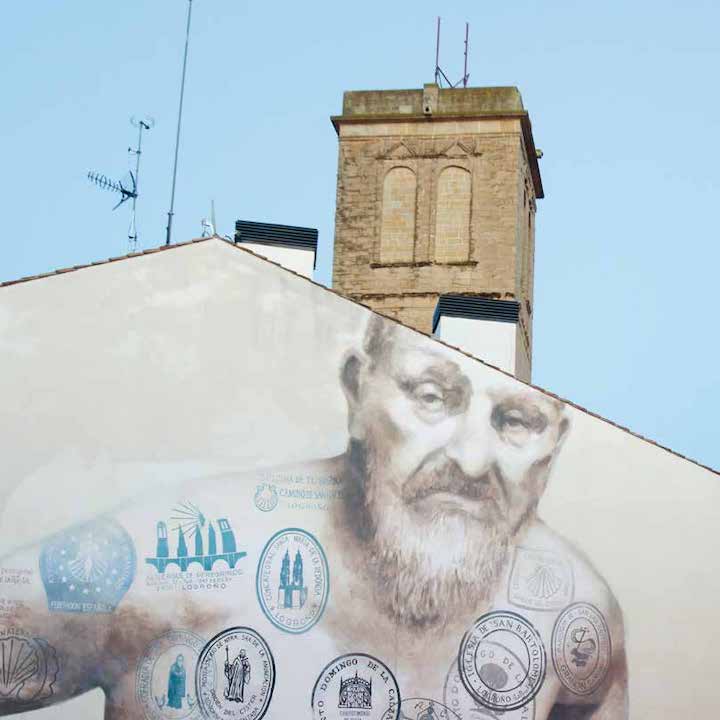
Photo: Pilgrim wall drawing
This is the most famous of the many routes that meet and intertwine in the city, and that in 2021 take on special importance, as this is a Xacobean Year.
On the afternoon of 31 December, the Holy Door of the Cathedral of Santiago was opened as tradition dictates, and Pope Francis’ decision to postpone the celebration until 2022 was announced, in anticipation of the possible complications that might arise due to the pandemic.
But there are many Ways of St James, as we all know. The French Way is possibly the best known, and has the most services.
It starts out in France, and after crossing the Pyrenees one of its variants approaches La Rioja and continues across the north of the peninsula towards Galicia.
It has 33 stages, but some people think that this is still too few, and prefer to start with the Ebro Way, which starts out at the mouth of the river, following the riverbank upstream until joining the French route in Logroño.
The Ebro Way is not only fortunate in the natural beauty of the landscape, there are also many Roman remains, as in ancient times it was possible to sail along the river from Tortosa to the capital of La Rioja.
Who would have thought that Logroño could almost claim to be a sea port!
The last stage of this Way starts in Alcanadre, in the La Rioja or Basque regions – as Strabo, Titus Livius and Ptolemy wrote in their works – and approaches the city winding through vineyards.
There are also some difficult stretches, and in all it takes at least eight hours of walking at a good pace to cover the 32 km in one day.
At the end, the pleasures of contemplating the cathedral of Santa María de la Redonda and the joys of a good glass of wine await. The Ebro Way has yet another surprise in store, and that is that it partly coincides in its final stage with another route focused on nature and spirituality.
This is the Ignatian Way, which reconstructs the route followed by Saint Ignatius of Loyola between Azpeitia, in Guipúzcoa, and Manresa in Catalonia, after his enlightenment. Founder of the Society of Jesus, and also of sanctuaries for Jewish scholars, Mohammedans and destitute women, he is a most inspiring and contemporary figure.

Photo: Game of the goose in square of Santiago.
Full information about this and the rest of the routes can be found at the Puente de Piedra in Logroño, where a Pilgrims’ Friends Society will be happy to help.
Thus, it is revealed that the orange marks that are to be seen here and there pointing to the south east correspond to the Ignatian Way, while the signposts to the Camino del Ebro and the arrows on the ground in the form of a pilgrim’s shell that point in the opposite direction indicate the French Way.
Multiple options but a single purpose: discovery in every sense, although it has to be said that there is an element of risk involved.
The siren songs of Logroño are so powerful that you just might want to stay.
